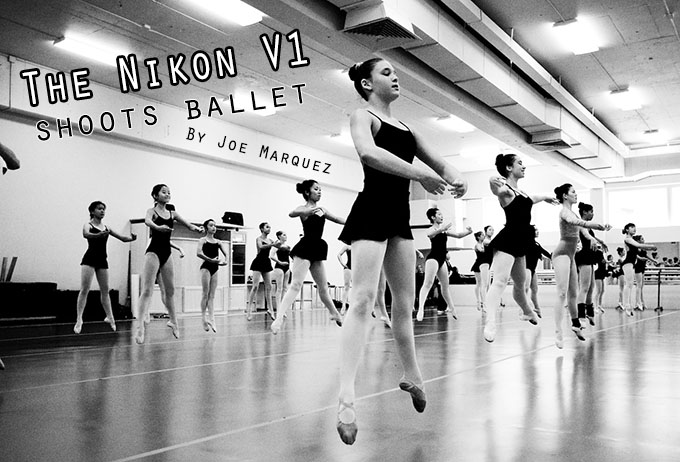
The Nikon V1 Shoots Ballet. Bravo!
by Joe Marquez – His website is HERE.
Can the Nikon V1 focus fast enough to capture world-class ballet dancers at the decisive moment? What about in low light? What about image quality? Earlier this month, I had a brief opportunity to test the V1 at a couple of ballet warm-ups and rehearsals in Honolulu. Could the inexpensive and diminutive Nikon V1 compete with my workhorse Nikon DSLRs?
ACT 1
I am the official photographer for Ballet Hawaii in Honolulu. During major ballet productions at the Blaisdell Concert Hall, I photograph world-class dancers from around the world. In early August I photographed Cinderella by the acclaimed artistic director of The Washington Ballet – Septime Webre. His Cinderella production in Hawaii was a major collaboration and included professional dancers from The Washington Ballet, the American Ballet Theatre, the Eugene Ballet Company, the Pittsburgh Ballet Theatre and students from Ballet Hawaii.
I typically photograph ballet with two Nikon DSLRs – the D3s and D800. I generally use the D3s to capture individuals or small groups of dancers and the D800 for wider and full stage captures. However, I ‘m always looking at other smaller, quieter camera options that can get the shots I need – and ballet rehearsals are an ideal venue for testing. In the past I tested a Fuji X100, Fuji X-Pro 1 and Sony Rx1 – each with limited success. These excellent cameras produce superb images, however the problem is their inability to track fast-moving dancers. Frequently, I’d have to revert to zone focusing to get the shot.
ACT 2
Enter the Nikon V1. I dismissed this camera when it was first announced almost two years ago. I read through the litany of complaints: sensor too small, not enough pixels, poor low-light performance, no subject isolation, etc. The one universal attribute was the surprisingly fast-focusing speed of the V1. Steve Huff’s review and the dramatic price drop a few months ago caught my attention but it wasn’t until the 32mm f/1.2 lens was released that I became seriously intrigued. Fast 1.2 glass on a small fast-focusing camera is worth consideration. But is it fast enough for ballet?
So about two months ago I purchased a Nikon V1 and the three primes – the 10mm f/2.8, 18.5mm f/1.8 and the 32. I tested the system in the streets of Honolulu, at small events and performances and patiently waited for the next major ballet performance in Hawaii – Cinderella.
For all major productions I try to capture a few special images during warm-ups and rehearsals. These images are used to document the production and generate a little publicity. Rehearsals also give me an opportunity to learn the dance sequences and get my timing down before the main performances. As usual, I used my workhouse DSLRs to make certain I got the necessary Cinderella shots. Only then did I bring out the Nikon V1 to give it a go.
ACT 3
So how did the Nikon V1 perform? Incredibly well and I’ve included a dozen images for your review. All images were shot RAW and the few here on display were converted to b&w with Silver Efex Pro. I prefer performance photos in color (under proper stage lighting) and rehearsal photos in b&w. As an added bonus, the V1 produces images with a pleasant film-like grain, which I rather enjoy.
V1 with 10mm 2.8
The key to ballet photography is timing. The dancer(s), the photographer and the camera have to be in sync to get that decisive moment – usually the peak or maximum height of a pose or jump. The V1 was able to capture these moments time and time again. In fact some of my favorite rehearsal images were taken with the V1.
I simply used continuous focus, auto-area mode with face detection on. I set the camera to manual exposure and occasionally used auto-iso. I’d track the dancer through the EVF and press the shutter as needed. I didn’t notice any delay or lag. For the most part I was able to get the shot I wanted – precisely when I wanted it. I’ve never been able to do this with any camera other than my DSLRs. And what is most impressive is the ability of the V1 to track fast-moving dancers jumping directly at me – and capturing them at the peak of their jump – all in low light. This is no easy feat for any camera including the venerable D3s.
V1 with 18.5 1.8
Here are a few details. In total I took less than 300 rehearsal shots with the V1. Were there many misses? You bet – but most were my fault due to bad timing or poor framing. Without doing a statistical analysis I would say the percentage of in-focus quality shots using the V1 was comparable to the DSLRs.
More details. During daytime warm-ups, the studio was sufficiently lit with diffused sunlight from several large windows. Here I used the 18.5mm and 10mm lenses. This allowed me to take wider shots (in tight quarters) and capture more than one dancer. I used the 32 to get more artsy images including some nice subject isolation (yes, subject isolation on the Nikon CX sensor).
The ultimate challenge was shooting a walk-through rehearsal on the dark Blaisdell stage. The stage lighting program was not used so the stage was darker than usual. When it was time to test the V1 I used the fastest lens I had – the 32. The 1.2 glass allowed me to keep shutter speeds and iso quite manageable. I was able to focus, track and capture several dancers at the decisive moment – including lovely Maki Onuki performing a jeté with her broom. This was the first time I’d seen her Cinderella performance. I had one and only one chance to get the shot with the V1. As she danced around the stage I kept tracking her through the viewfinder. When she jumped – I pressed the shutter and the V1/32 combo nailed the shot. By the way, Maki loves this particular image.
Would I use the V1 for a live ballet performance? Absolutely. I’d certainly never sacrifice an important ballet shot by using a less capable or inferior camera, however, I have no doubt I could shoot an entire ballet with the V1 and get superb images. The V1 will never surpass the image quality and low light capability of a full frame DSLR. However, the silent shutter and fast-focusing sensor are ideal attributes and the image quality is more than adequate for capturing all the beauty of a ballet performance.
So what next? I may purchase the Nikon Ft-1 adapter and try the 70-200mm lens (converts to a 190-540mm f/2.8 lens on a V1) at a live ballet performance. If so I’d probably purchase a V2 and disable image review (can’t do this on the V1). Or I may wait for the Nikon V3 and hope for improved ergonomics and low light capability while maintaining the current features that make the V1 special. And finally, I really must try using the 10, 30 and 60 fps burst rate. Might make for some wonderful captures of a ballerina in mid-air.
SIDENOTE
Just for fun, I’ve also included a link to a short video clip utilizing another feature of the Nikon V1 – slow motion at 400fps. The young ballet students were in a character class, dancing in a large circle. After a few photos I realized still images alone weren’t capturing the energy of the moment so I switched modes and took five seconds of video. This converts to a one-minute slow motion clip. This feature, fun as it is, would be so much more useful at higher resolution than the current 640×240 pixels.
Hope Nikon improves this feature in the V3.
FINAL ACT
The inexpensive and diminutive V1 continues to amaze. Focusing speed is outstanding and image quality is more than adequate for ballet photography. In particular the 32mm lens on the V1 is a superb combination with the ability to capture fast-moving, talented dancers at decisive moments in good light or bad. Now I must patiently wait to photograph the next major ballet performance in Hawaii. In the meantime – bravo Nikon V1, bravo!
Special thanks to Ballet Hawaii, The Washington Ballet, Septime Webre and the many talented performers including: Maki Onuki, Luis R. Torres, Jared Nelson, Morgann Rose, Tamás Krizsa and of course the students at Ballet Hawaii.

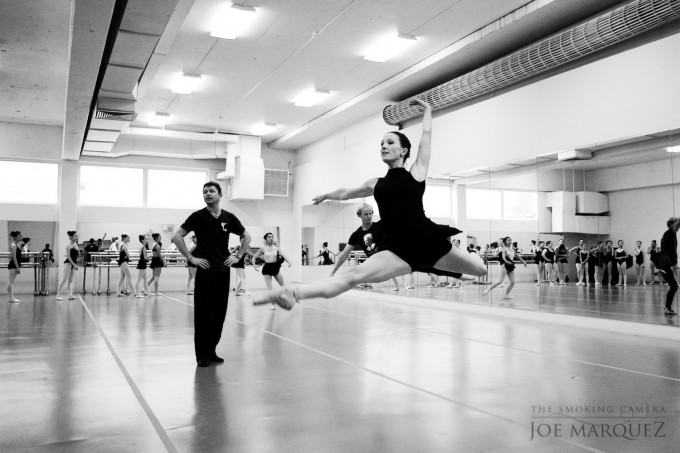
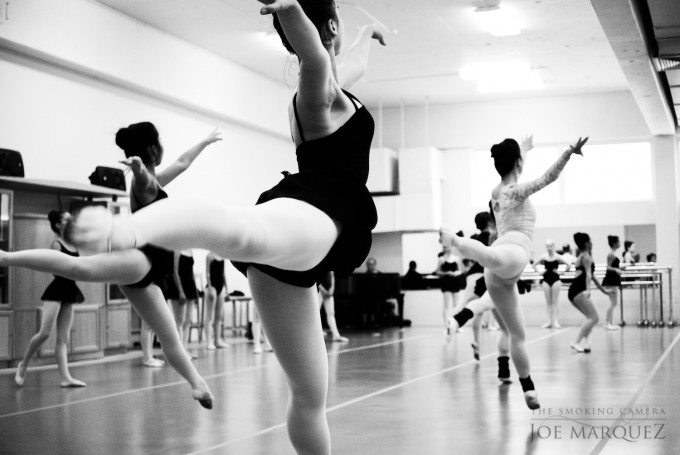
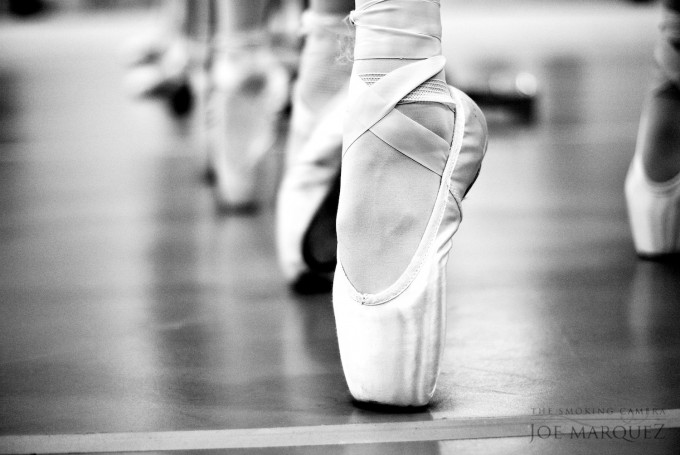
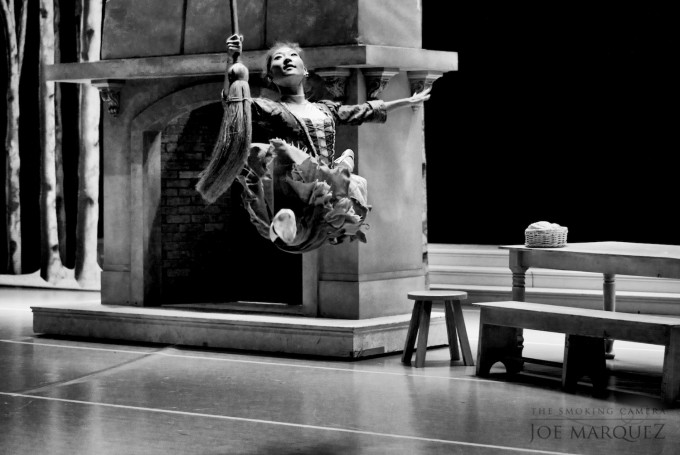
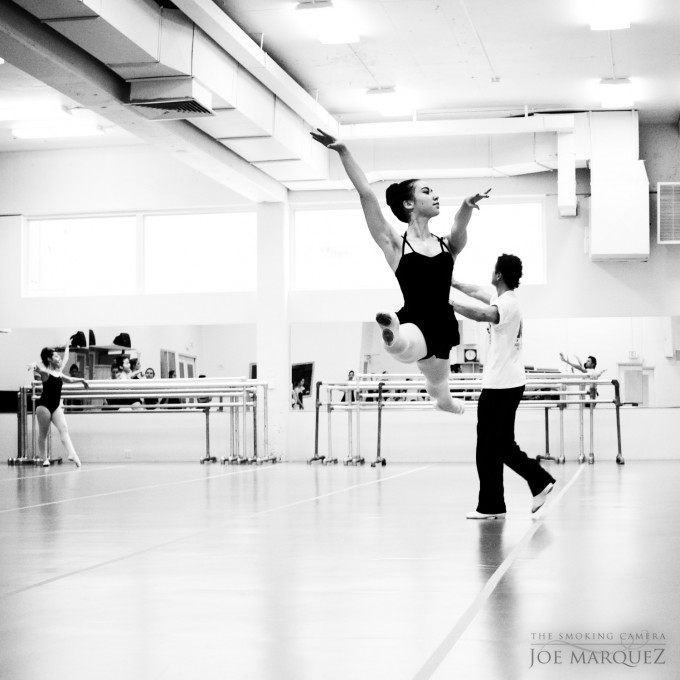
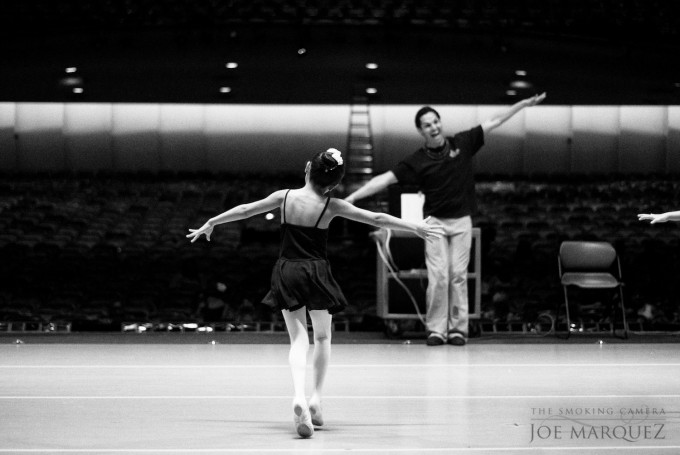
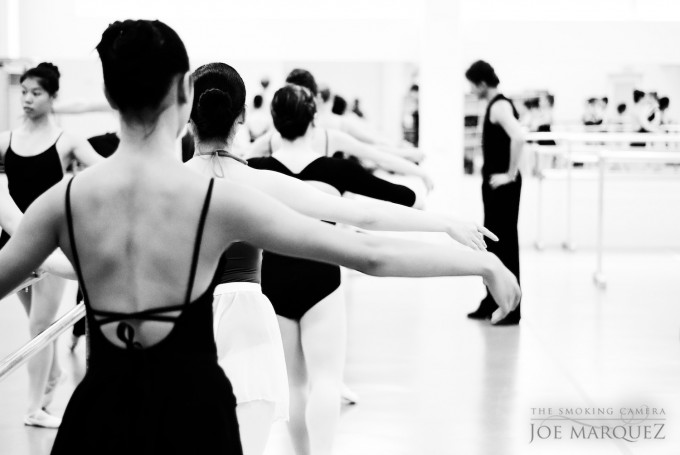
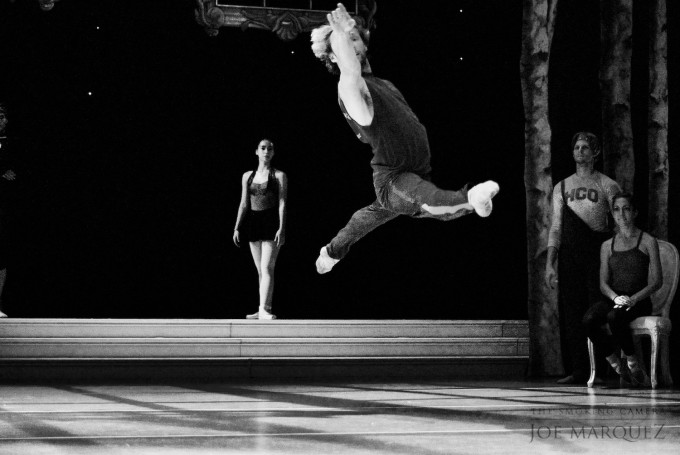


I’d love to get a 18.5mm, but am worried if there might be occasions that wider is needed. should I just go purchase it anyway? would be beneficial for darker situations
Right on, watch the pros shoot with their D4s’s and D1x’s – at 10 frames per second they sound like a burp gun.
MillsArt, I can confirm your comments about focus tracking with the V1. Vastly better than the D700, D7000, and D3300. As for shooting sports with manual focus – you can have it. I was shooting sports as a magazine staff photographer 1972-76, and no thanks. Not even the best pro photographers at the time could track focus as well as a the D3300, much less the V1.
Late to the party here, by holy smokes, that is a nice shot. And thanks for the inspiration; I’ll take the 10/2.8 out of the bag. I do a lot of utility photography, in a the course of an hour I’ll have to cover vastly varied circumstances of lighting and movement in school classroom photography and stage events, and have relied on the 6.7-13.5 mainly (big splurge). The V1 takes some careful noise reduction at high ISOs but in the main I do like the camera in 2016.
A bit after the fact, but after having read the above, … I am surprised that people care so much about NOT liking a camera.
Fabulous ballet shots, thanx Joe; who cares about the camera when you see great pictures like that?
I used about everything from view camera’s to digital compacts and I currently own mostly Fuji X camera´s. I sold my V1 but bought another one because I missed it too much. I often make use of the V1’s unique possibilities and its picture quality is in general good enough for me.
Unlike most I don’t seem to need 40×60 inch prints of a black cat in a coal mine frequently 😉
One of the situations where the V1 works for me, a grab shot during a heated discussion:
https://www.flickr.com/photos/photomensch/8496884843/
hi Dimitris,
the fuzz, i think, is due to the never ending bashing of the sensor size with no shallow DOF and a low SNR.
so the use of the 1.2/32 lens in these harsh conditions produced very nice images, which only shows us, what can be done with thin camera. it is not unique, however. could have been done with another camera as well.
as you say, timing is crucial and moving subjects can be anticipated and focused accordingly.
the thing is with continuous autofocus: you are able to shoot a lot more photos of a moving subject. simple as that.
you could wile away the hours
Conferrin’ with the flowers
Consultin’ with the rain
And your head you’d be scratchin’
While your thoughts were busy hatchin
I like grain
But it is one of the selling points that I considered …and many others as well
You’re welcome. I’ve just bought the 18.5mm and am very impressed with the results so far. Shot some portraits at f1.8 and the rendering is really nice. I’m wondering whether the 10mm is a worthwhile addition as well (I’m hesitating because it is only a touch faster at maximum aperture than the 10-30, though obviously that’s not the only consideration).
I don’t understand the praise for these pictures. They are grainy, noisy, under and over exposed and many are out of focus. I get the “artistic” value, but as a series they just aren’t what I would call good photography. What am I missing?
Great story telling
Yes you guessed right. I have not shot neither Nikon V1 nor any other mirrorless camera apart from my D-Lux 4 and a loaned Vario-X, but not for ballet.
If it is about the shutter noise I can anticipate that you have a strong point.
But if it is for the AF it still does not make a lot of sense to me. I used to shoot ballet, concerts and dance with a Nikon F2A manually, doing the same thing today with a Leica M and a 135mm or a wide angle.
It is a matter of the old cine technique; instead of chasing your subject, your subject is coming to you. The timing is a matter of skill.
But as I do not know “mirrorless” any better I should admit that you maybe right.
One thing impresses me though. What do you do need all those mirrorless cameras for. Is it about photography or is it for the sake of trying out new gear? If V1 is so good as you say, which I have no reason to doubt, looking at the results, why don’t just stick to it and that’s all?
Joe captured those masterful pictures with a V1. But please allow other looking at those photos to configure the technique they should had used to capture same using different gear. That’s why I noted what the fuss about the V1.
Best regards,
Dimitris V. Georgopoulos
Photographer at Large.
Athens, Greece.
” Who is out there buying the V1 for the purpose of manually focusing on sports ?”
And who is interested in C-AF if not the one usually interested in fast action shots a.k.a. sports? And I don`t think they will buy a V1 – I was just trying to say that IMHO for the people interested in the V1 fast C-AF is not one of the selling points…
Yes you technically can track action with MF but how many people in this day and age want to do that ? NCAA football season starts this weekend and there are going to be several hundred photographers on the sideline at a given game and I bet I am not going to see anyone trying to manually focus action shots. Should I switch my D3s to MF and try to shoot the whole game that way because they did it like that 33 years ago ?
Maybe I just don’t understand the point your trying to get across ? Your suggesting that the AF ability of the camera isn’t a big selling point and many photographers don’t care.
Fair enough, I agree that many don’t care, but how many of those buy the V1 if they want to focus manually ? For one thing, None of the lenses except for the 32mm even have a focus ring!
Why not shoot something like a NEX which can take darn near any legacy MF lens made and has a great focus peaking, a much better sensor etc ?
The N1 system is simply a horrible system for those who enjoy manually focusing.
Who is out there buying the V1 for the purpose of manually focusing on sports ?
Yes I do. Try my website and my flickr page.
BW is so easy to hide flaws that many clients wanting color would see. Do you have color samples? Nearly every high ISO BW from this sensor looks good, color is where it falls apart past 800-1600
Love the pictures!
I’m using the V1 for video mostly, but it is also my preferred family camera! As far as my experience goes, it is my first pocket camera that is as fast as a dslr, and it allows to shoot pictures which I would have missed with for instance my Lumix LX3.
Here is one of those shots: my youngest boy jumping – must say his ballet skills are inferior to his soccer skills, though!
https://lh4.googleusercontent.com/-s6sEVgTSFHw/UhBd8mQV6YI/AAAAAAAAKTo/eqzraPXU2Ro/w1292-h865-no/DSC_5504.jpg
Joe, congrats for the very beautiful shots, they transmit the mood of the event VERY well!
“Its a little mirrorless camera than can track like a DSLR, something no one else has been able to implement very well to date.”
…and many photographers don’t really care, because you can track and shoot sports even with a manual focus rangefinder (been there, done that). Or how else can you explain the excellent shots done, for example, in the ’80s Soviet Union Olympics when AF tracking was just a pious wish?
Sure, having it is very helpful, but that’s all…
Thanks Col for all the nice points. Looking to add to my arsenal of primes as well.
The “fuss” is that the V1 has some unique features that allowed it to capture these photos. Its electronic shutter is totally silent and that can come in very handy during performances.
Additionally, its PDAF system works amazingly well tracking moving subjects. I’m going to go out on a limb and guess you haven’t shot with other mirrorless bodies ? I’ve owned the NEX5/7, Fuji XPro and XE-1, Olympus EM-5, EP5, GH2 etc and NONE of them can come anywhere close in regards to AF tracking. V1 is really right on par with my D3s, which is pretty amazing.
Camera’s like the OM-D have great AF for single shots and can produce great images of course but just try to track action with them and they fall flat. That is the “fuss” with the V1, its a little mirrorless camera than can track like a DSLR, something no one else has been able to implement very well to date.
The very fact that a little $250 camera that no one really wanted when it was introduced, that everyone said was garbage, when used by a talented photographer can in fact produce some nice images because of its fast AF, zero lag, and fast native glass options.
You simply couldn’t get these shots with something like an XE-1 as easily, just doesn’t have the AF ability, no matter how skilled the photographer.
Photography is both an artistic and technical pursuit many times. To produce one’s artistic vision of things like dance performers, you need not only a good eye for composition, but also skills of timing, AND you need gear that can perform in the manner you need it to.
But can that high frame rate and AF be achieved on a larger (M4/3 or APS-C) sensor? Or is the inherently smaller 16mm sensor used in the Nikon1 the optimal size for high speed shooting??
It is about an exquisite collection of fine photos and this is the main point.
I cannot understand though what is the fuss about the Nikon V1. Would it may any difference if they were taken with another camera? I do not think so. It would still be an exquisite collection of fine photos.
Well done.
Dimitris V. Georgopoulos
Photographer at Large
Athens, Greece.
Well given I’ve got a lot of high end Nikon glass, such as a 200-400mm f4 VR and nothing in Sony Alpha mount, kind of keeps me sticking/stuck with the N1. Additionally, the V1 was $200, while a higher end Sony/Olympus body, while perhaps very nicely spec’d would likely cost $1000+. V1 just has such bang for the buck these days. Its a bit unfair to compare blowout priced older tech to cutting edge prices of course, but is what it is.
Not easy to compare hypothetical capabilities. So far the Nikon 1 has served me well, however, I welcome the competition. More options at reasonable prices is a good thing.
Now that Sony had access to all the Aptina sensor patents from the Nikon 1, we are likely only months away from seeing Sony and Olympus implementing very fast AF, high FPS, etc. I am not sure how the Nikon 1 will be able to differentiate itself when you can get the same capabilities with RX, m43 and NEX. Will the FT1 be enough to offset the difference in sensor size?
Fabulous pictures and a great commentary about why the V1 works for you. And the close-up of the ballet shoes shows that you can do shallow DoF with the Nikon 1 system. I can see why people say the V1 is a great B&W camera as your images have a bucket load of ‘character’ (defined as a quality that can’t be measured by pixel peepers and test chart photographers). I’m about to add to my arsenal of N1 lenses so thanks for the inspiration.
Aloha SK Saito. Recently, there have been major ballet productions of Cinderella, Romeo and Juliet, Alice in Wonderland, Peter Pan as well as Nutcracker – all at the Blaisdell and all featuring world class dancers. See you at the next one!
Excellent photos. I live in Hawaii too. Makes me wanna go to a ballet now after reading your post. Thanks!
Thank you Mars Observer. Ballet is such a timeless, classical form of dance, so yes it is well suited for b&w. And the V1 renders b&w so very nicely. Thanks for the warning. lol.
Thanks MillisArt. The V1 at a blowout price is hard to resist. And yes, the 1 system has tremendous potential for sports photography. Just hope Nikon delivers with the V3. The 6.7-13mm is definitely on my wish list.
Thanks Greg. Agree with everything you wrote. Glad you came back to the V1. Very underrated camera IMHO.
Great editorial and images Joe.
Although I’m not very “Ballet savey”, I might suggest that, to my novice eyes, the fine film-like grain of the V1 adds an element that suits the art form particularly well!
I too find I’m using the V1 more and more in place of my D700 and even on occasion when I’m shooting with the larger camera I’ll think ‘ah – the V1 would have done better with this particular shot / situation’
One note on the FT1 adapter though – BEWARE! It works so well that it will make you want to upgrade all your older Nikkor lenses to AF-S versions!!
Thanks Andrew. Your point is well taken and I should have emphasized this in the write-up. Fast and accurate tracking ability and a silent shutter are tremendous assets for performance photography.
That’s a really interesting post, thanks. Having a quiet shutter for performance photography is a real asset, and if the camera can track focus and action as well then even better. Having photographed dancers, I know that peak moment of a movement is so fast so well done for getting so many of them spot on in your examples above.
Always enjoy your images Joe and your previous post really pushed me over the top and I ordered the V1 at blowout pricing. The FT-1 is really a fantastic tool and gives some fantastic reach. As a sports photographer for a living, I’m looking forward to using it for shooting batters from the outfield camera positions and being able to fill the frame, and also for some golf events where the silent shutter will be really useful for some shots during the back swing, not to mention the 30/60 fps burst. Check out the 6.7-13mm VR if you can as well, that is one heck of an UWA zoom for a modest price. Great optics across the frame and the VR system works well down to about 1/4th a second for me.
Great shots Joe! I think the V1 renders black and white very well. I actually bought the V1 when it was first released and really loved most everything about it except the lack of fast primes and most of all the price. I returned it. Mostly due to Steve’s continued love of this camera I’ve recently given it a second chance and I’m really glad I did. (The much lower acqusition price definitely helps!) I too have the 10mm and 18.5mm and optioned for the FT1 adapor to use with my 50mm 1.8. The 32mm 1.2 is still a little too rich for me at this point, but it does look fantastic for this system. I highly recommend getting the FT1. I’ve hardly even used the 10mm and 18.5mm because I love the results of the 50mm and FT1 so much. It focuses very quickly but I’m not sure if it would be fast enough for capturing your ballet shots. Anyway, really enjoyed your user report! Thanks for sharing. (It would be nice if Nikon would issue a firmware update to defeat the image review in the viewfinder, but I’m not sure that will happen)